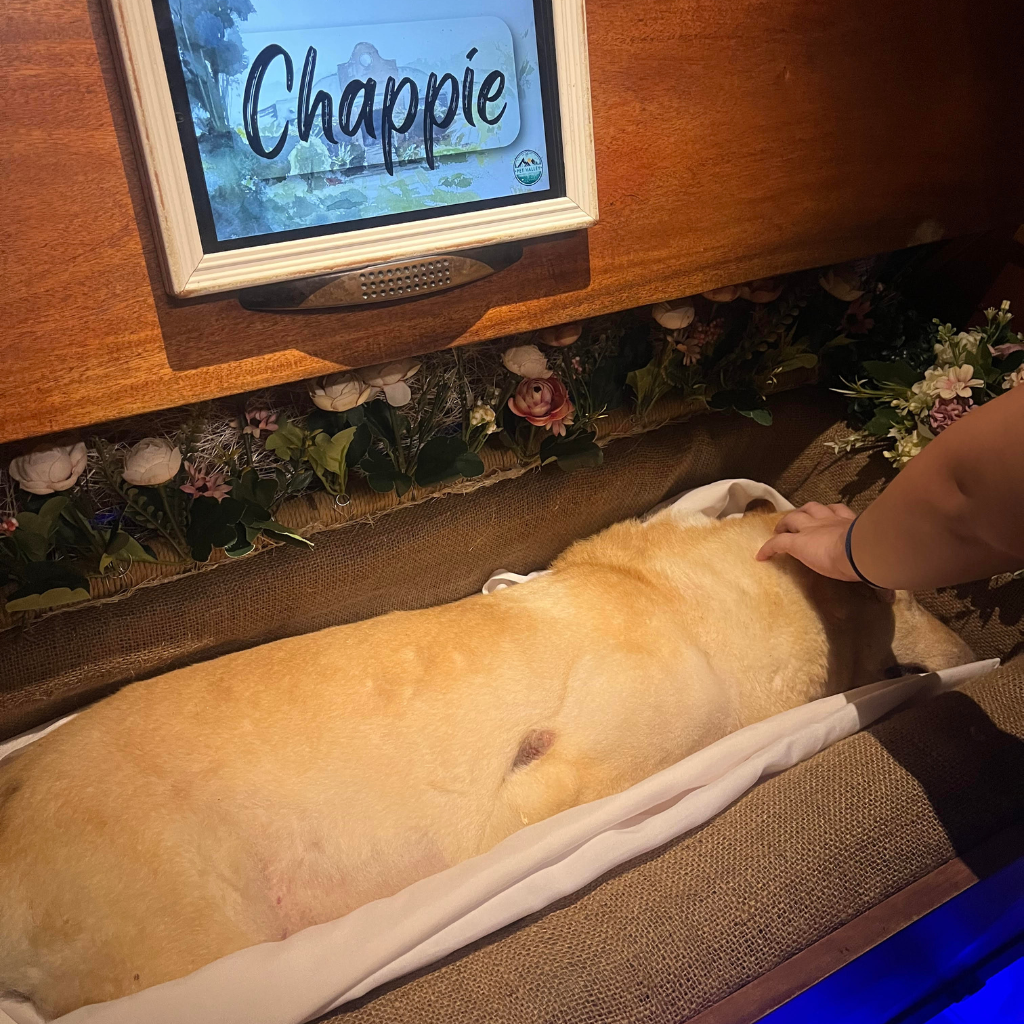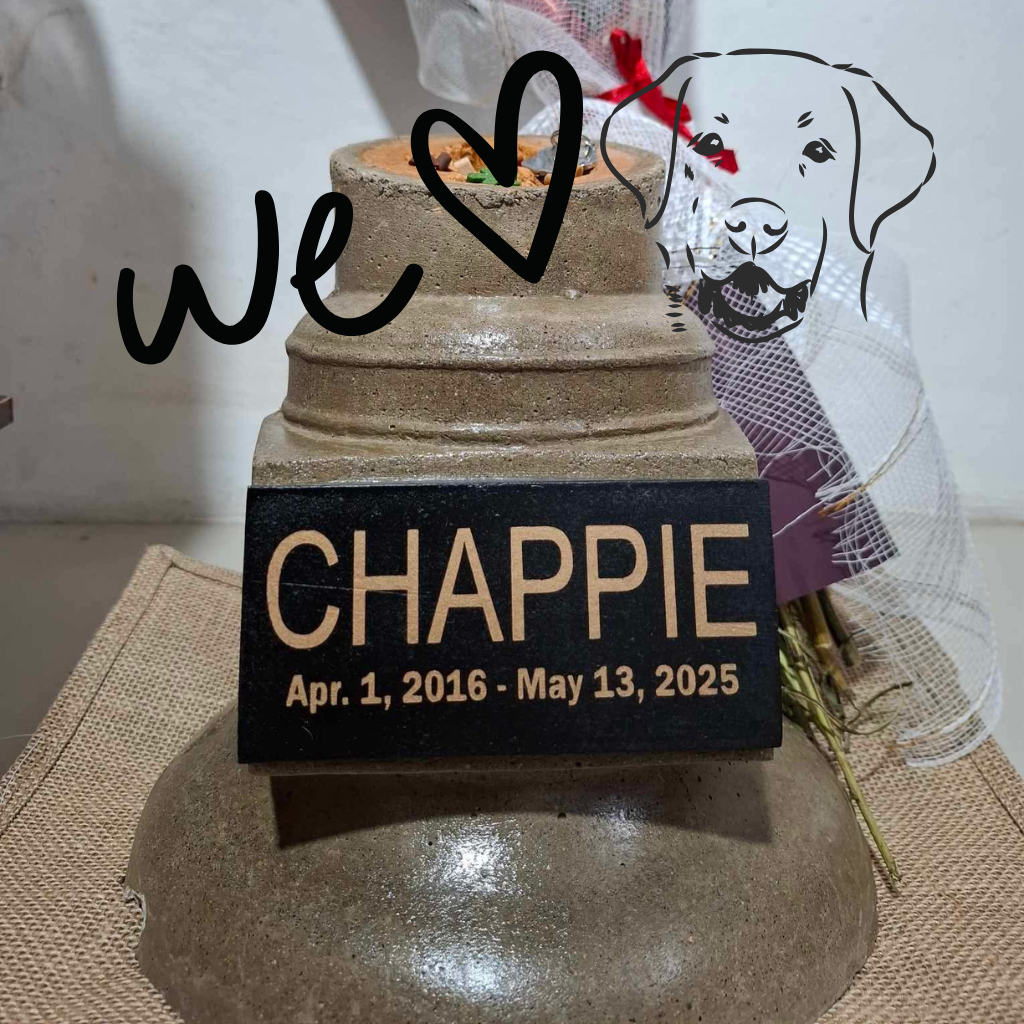Losing a beloved pet is a deeply personal and emotional experience — one that often takes people by surprise with its intensity. Pets aren’t just animals; they’re companions, silent listeners, sources of comfort, and a significant part of our daily routines. They greet us at the door, curl up beside us in quiet moments, and offer unwavering love without conditions. When they’re gone, the silence they leave behind is overwhelming.
Losing Chappie, my gentle companion of nine years, shattered a part of me I didn’t know could hurt this deeply. His passing was sudden — one moment he was here, full of quiet kindness, and the next, he was gone, leaving behind a silence that felt unbearably loud. I was never prepared for that kind of goodbye. The shock and grief came in waves, catching me off guard in the smallest moments — an empty spot on the floor where he used to lay, the absence of his soft eyes greeting me at the door. I found myself aching not just for his presence, but for the comfort and unconditional love he gave so effortlessly. Chappie wasn’t just a pet; he was family, a piece of my heart — and letting go has been one of the hardest things I’ve ever had to do.
This experience of losing a beloved pet may be just as painful, and sometimes even more confusing, as losing a person. The absence can make you feel guilty, sorry, or even angry: “Did I do enough?” “Why did it have to happen like this?” These are normal feelings, but if you don’t talk about them or deal with them, they might turn into stronger sadness or even despair.

Healthy Ways to Grieve
A beloved pet is like a member of the family because they offer unconditional love, companionship, and comfort. Not having them around makes us feel empty inside. While healing takes time, you can definitely grieve in a healthy way. See how these tips can help you cope with the grief of losing your furry friend.
#1. Take Time to Grieve
There is no “right” way to feel when you’re grieving. Allowing yourself to grieve is an essential part of healing after the loss of a beloved pet. It provides emotional release, validates the deep bond you shared, and lets you heal completely. Rather than suppressing pain, grieving helps you process your emotions in a healthy way, preventing long-term sadness or emotional numbness. It encourages meaningful reflection, healthier coping habits, and often connects you with others who understand your loss. The most important thing is that it helps you remember your pet with tenderness while finding peace in the love that is still there.
#2. Talk to Somebody Who can Relate
If you need help, talk to people you know, or support groups especially those who have also lost a pet. Talking about feelings and memories can help ease the pain of loss.
It can be very lonely to be grieving, especially when other people don’t fully understand how bad your loss is. That’s why it can be so helpful to talk to someone who can relate. Sharing your feelings with someone who truly “gets it” helps validate your pain and reminds you that you’re not alone in your sorrow.
Sometimes, you don’t need advice — just someone to listen without judgment. Whether you’re talking about memories, feeling guilty or sad, or just crying together, those talks make it safe to let go.
You can get relief from people who have been through the same situation by speaking to a pet loss counselor or joining an online support group. In those times of interaction, healing begins, one story told and one gesture of agreement at a given moment.
#3. Practice Self-Care
When you’re sad, it’s easy to forget about your own health. As you grieve the death of a pet, it’s easy to forget to take care of yourself, but now is the most important time to do so. Keeping care of your physical and mental health can help you stay grounded when your feelings get too strong.
Eating healthy meals, drinking enough water, getting enough sleep, and even going for short walks can help your body heal while your heart does. Being kind to yourself on a mental level is also part of self-care.
Allow yourself to cry, do things that make you feel better, like writing in a book or spending time in nature, and surround yourself with positive people. You don’t have to “bounce back” right away. It’s not a sign of moving on to take care of yourself. It’s a kind approach to honor your grief, keep your peace, and begin the healing process.
#4. Write Your Pet a Letter
Writing down your love, memories, and goodbyes can help you heal deeply. It helps you let go of feelings that you’ve been holding in and remember key moments.
Writing a letter to your pet is a sincere way to show how you feel when you can’t say it out loud. It gives you a place to say goodbye, share memories, and let go of any love, guilt, sadness, or thanks that you may be feeling. You have one last chance to connect with them in your own words, whether it’s a short message or several pages long.
Your beloved pet can hear how much they mean to you, how happy they made you, and how being with them changed you. You could write about the empty space they left or the little things that are different now that they’re gone. Truth and love are the only things that matter. This can bring you peace when you least expect it, helping you hold on to the good moments, while gently letting go of the pain.
#5. Make a Memorial
Honor your pet’s memory by making a picture album, planting a tree, or keeping something special from them, like their collar or favorite toy. Rituals can provide a sense of closure.
A significant way to remember the life and love you shared with your pet is to make a tribute. It turns sadness into memories, giving peace and a place to think about the good times. A remembrance doesn’t need to be fancy; it only needs to be real. It could be as easy as putting their collar in a keepsake box, framing a favorite picture, or planting a tree in their honor.
Some people make a small altar with pictures, candles, and letters written by hand that show how much they love and appreciate someone. Some make digital tribute pages, keep journals, or write songs to share with family and friends.
Memorials are tangible expressions of demonstrating how much you care. This is a sweet way to remember that your pet will always be with you in your heart, even though they are no longer physically with you. When you’ve done this, you create space to both grieve and celebrate a life that left paw prints on your soul.

#6. Celebrate and Cherish Their Life
Don’t just think about the end; instead, enjoy the love and happiness your pet brought into your life. Remember those pleasant moments —they’re part of your healing.
Celebrating your pet’s life is a beautiful way to shift from sorrow to gratitude — honoring not just their passing. Don’t just think about how depressing it is that they are gone. Take some time to remember the little things, like their wagging tail when you walked in the door, their purring when you were having a bad day, and their funny habits.
To keep their spirit alive, you could make a scrapbook with your favorite pictures, have a small get-together with friends who knew your pet, or share stories about them on social media. Some light a candle on their birthday and even donate to animal shelters in their honor.
#7. Be Patient with the Process
Grief has no end date. Sure, some days will be worse than others. Allow your heart to heal at its own pace and be kind to yourself.
It’s not possible to plan your grief, and getting over the loss of a pet takes time, sometimes more than you expect. You shouldn’t feel like you have to “move on” right away. Instead, let yourself feel everything fully. Trying to get over your grief too quickly can make your feelings stronger, unsettled, and more painful in the long run.
Everyone heals differently. Sure, some days will be worse than others but that is okay. Allowing yourself the grace to mourn at your own pace is a vital part of emotional recovery. Take each day as it comes. Believe that the pain will slowly disappear over time not because you’ve forgotten, but because your heart is slowly learning how to hold the love in a different way.
#8. When Ready, Get a New Pet
Even though you don’t have to “replace” your pet, giving your love to a new pet can help you move on but only when you’re ready. This is a very personal choice when the time is right, letting another pet into your life can be a powerful way to find happiness, meaning, and companionship again.
It’s a way to continue the legacy of care, kindness, and connection your pet brought into your life. You don’t have to rush this phase, but getting a new pet when you’re ready might show you how strong love really is.
Until We Meet Again
Though the pain of losing Chappie still lingers, I’ve come to understand that grief is simply love with nowhere to go. His memory lives on in the quiet moments, in the routines we shared, and in the love that shaped so many of my days. While I wasn’t ready to say goodbye, I found comfort in knowing that our bond was real, deep, and lasting.
Grief doesn’t follow a timeline, but allowing yourself to feel fully is what stops sadness from consuming you. It turns the ache into remembrance — where the pain softens and the love remains.
Let the memories remind you that you gave and received a kind of love that was pure, and that’s something worth celebrating even through the tears.
Change is the only thing permanent in this life and moving forward doesn’t mean forgetting — it means carrying his spirit with me, allowing his love to inspire kindness, and finding healing one gentle step at a time.
Happy life on the other side, Chappie — until we meet again, my sweet boy. 🐾💛


